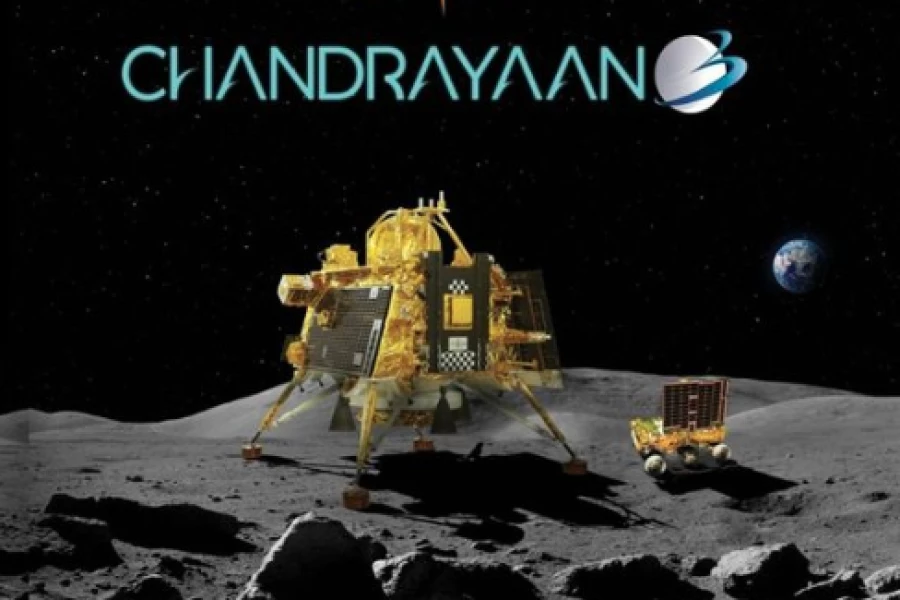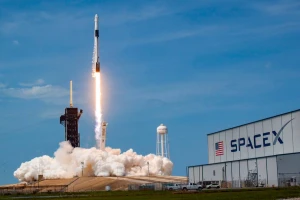- SPACE
- 1 year before
India lands on moon with Chandrayaan-3
India's Chandrayaan-3 mission successfully landed on the Moon, joining the country's elite Moonlanding Club in a historic success and more.
-

- 1 year before
- Category: SPACE
- Published: 24/08/2023

In an impressive success, India's Chandrayaan-3 mission landed smoothly on the Moon, making the country the fourth country in history to achieve this significant achievement.
The event occurred at 8:32 a.m. Eastern Time on August 23, and Chandrayaan-3's lander landed near the Moon's south pole with a 19-minute push from its orbit around the Moon.
This achievement brings India together with the prestigious group of countries that have historically performed successful soft landings on the Moon, such as the United States, the former Soviet Union, and China.
After
The coverage of the
The
The landing zone was located near the crater Manzinus U, at 69.37 degrees south latitude and 32.35 degrees east longitude. The European Space Agency's ESTRACK New Norcia deep space monitoring station in Australia provided critical support at the time of landing.
This mission marked the highest latitude reached by any spacecraft making a soft landing on the Moon. This success comes after a setback in 2019 when the Chandrayaan-2 mission's attempt to land on the Moon's surface.
Especially the success of this landing came a few days after Russia's Luna 25 spacecraft had problems during an orbital maneuver, crashing into the Moon.
Next to the landing craft is Pragyan, a six-wheeled, solar-powered rover weighing 26 kilograms. The objective of the rover is to demonstrate its ability to navigate the surface of the Moon. After the successful landing, the expected opening of the navigator will take place in a few hours.
This mission carries a number of payloads for scientific experiments on the landing vehicle and rover site, although it is essentially a demonstration of landing technology. The landing craft Vikram carries the Langmuir Probe (RAMBHA-LP), an expandable Langmuir Probe designed to measure plasma density near the Moon's surface. Other tools include probes to measure the thermal properties of the Moon's surface up to 10 centimeters deep, a tool to detect seismic activity on the Moon, and NASA's Passive Laser Retroreflector Array.
Both spacecraft will carry out activities and experiments during the approximately 12-day Moonlight period. However, during the night time of the Moon, temperatures are expected to drop to around minus 130 degrees Celsius.
After the mission reached an elliptical Moon orbit on August 5, it carefully adjusted its orbit to transition into a low Moon orbit and prepared for the successful landing attempt.
The chosen main landing site was determined by high-resolution photographs taken by NASA's Lunar Reconnaissance Orbiter and data from the Chandrayaan-2 orbiter. The Chandrayaan-2 mission experienced a difficult landing in 2019 due to an accumulation of software errors.
India's first lunar probe, Chandrayaan-1, was launched in 2008. He spent a year orbiting the Moon to investigate the presence of water molecules. Then, in 2009, it was deliberately commanded with the intention of hitting the surface of the Moon.
This achievement came with a renewed period of interest, particularly focused on the Moon's south pole and potential water ice resources.
The Soviet Union's Luna 9 became the first spacecraft to make a smooth landing on the Moon in February 1966 and transmit photographic images to Earth. The United States repeated this feat the same year as Surveyor. The United States carried out a historic event after Neil Armstrong and Buzz Aldrin landed on the Moon in 1969 in Mare Tranquillitatis. China, on the other hand, carried out its first soft landing with the Chang'e-3 lander and rover mission in December 2013, followed by a historic landing on the moon's far surface in 2019.

Source: SpaceNews





Write Comment